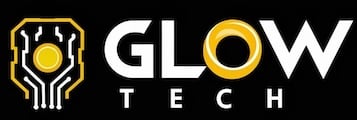
Transitioning into a career as a UX designer can be an exciting but challenging journey. With the rise of digital products and services, the demand for skilled UX designers is growing rapidly, making it a rewarding career path for those who love solving problems and improving user experiences. Whether you’re coming from a different field or just starting your professional life, this blog post will guide you through the steps needed to successfully make the leap into a UX design career.
1. Understand What UX Design Is
Before diving into a UX design career, it’s essential to fully understand what UX design entails. UX (User Experience) design is about creating digital products that are easy, enjoyable, and accessible for users. It focuses on how users interact with a product or service, ensuring a seamless and intuitive experience.
As a UX designer, you’ll be responsible for:
- Conducting user research to understand the needs and frustrations of users.
- Creating wireframes and prototypes to test and iterate on design ideas.
- Collaborating with multiple stakeholders to ensure the product meets both user and business goals.
If you enjoy solving problems, thinking creatively, and empathizing with users, UX design could be the perfect fit for you.
2. Assess Your Transferable Skills
Many of the skills you already possess may be highly relevant to UX design. Transitioning from fields like graphic design, psychology, marketing, or project management could give you a solid foundation for UX work. Here are some transferable skills that are valuable in UX design:
- Empathy: Understanding user needs and emotions is key in UX. If you’ve worked in customer service, social work, or research, you’ve likely honed this skill.
- Problem-solving: UX design is all about finding solutions to user pain points.
- Collaboration: UX design involves working closely with developers, product managers, and other team members.
- Creativity: If you’ve worked in design or any creative field, your ability to think outside the box will be crucial in UX design.
Identify the skills you already have and build on them to strengthen your transition.
3. Learn UX Design Fundamentals
Once you understand what UX design is, it’s time to dive into the core principles. Some essential areas to focus on include:
- User research: Learning how to conduct interviews, surveys, and usability tests to gather insights into user behavior.
- Information architecture: Organizing and structuring information so users can easily navigate digital products.
- Wireframing and prototyping: Creating visual blueprints (wireframes) and interactive models (prototypes) to test ideas before final implementation.
- Interaction design: Understanding how users interact with the product and creating intuitive workflows.
- Visual design basics: Even though UX is more about the user experience than visual elements, it’s still important to have a basic understanding of design principles, such as layout and typography.
There are many free and paid resources available online to learn UX design, including platforms like Coursera, Udemy, and LinkedIn Learning.
4. Invest in UX Design Tools
To become a UX designer, “you’ll need to get comfortable using industry-standard tools” Kat from the Berlin Web Designer states. Some of the most popular ones include:
- Figma: A collaborative interface design tool that allows for prototyping and team collaboration.
- Sketch: A design tool used for wireframing, prototyping, and creating user interfaces.
- Adobe XD: Adobe’s tool for UI/UX design and prototyping, allowing for seamless collaboration and design iteration.
- InVision: A platform for creating interactive prototypes and collaborating with teams.
Familiarize yourself with these tools through tutorials and practice projects, as they are commonly used in the industry.
5. Build a UX Design Portfolio
Your UX design portfolio is one of the most critical components of your career transition. It showcases your skills, thought process, and ability to solve design problems. As you’re learning UX design, start creating portfolio projects to display your growing expertise. If you don’t have real-world projects yet, you can work on personal projects, redesign existing websites, or volunteer for small businesses and nonprofits.
Your portfolio should include:
- Case studies that demonstrate your design process, from research to final implementation.
- Wireframes and prototypes that show how you approached a problem.
- Clear explanations of how you incorporated user feedback and iterated on your designs.
Potential employers will want to see your ability to think through challenges and create solutions, so make sure your portfolio highlights this.
6. Network with UX Designers
“Networking is a powerful tool in any career transition, and UX is no different” Sam from Samantha Digital states. Connecting with experienced UX designers can provide valuable insights, mentorship opportunities, and even potential job leads. Here are some ways to build your network:
- Join UX communities: Participate in online forums, Slack groups, or LinkedIn groups for UX professionals.
- Attend UX events: Conferences, workshops, and meetups (both online and in-person) are great places to meet others in the field.
- Follow UX experts: Engage with UX influencers and thought leaders on platforms like Twitter and Medium. They often share tips, trends, and resources for aspiring designers.
Building relationships in the UX community can accelerate your learning and help you land your first UX job.
7. Get Practical Experience
While learning the theory and practicing with tools is crucial, gaining practical experience is the next step. Here are some ways to get hands-on experience:
- Freelance or volunteer: Offer your UX design skills to small businesses, startups, or nonprofits in exchange for experience and projects for your portfolio.
- Take on internships: Many companies offer internships or junior positions in UX design, even for career changers.
- Hackathons or design challenges: Participating in design challenges or hackathons can give you real-world problems to solve and experience working under time constraints.
The more experience you gain, the more confident you’ll become in your ability to apply UX design principles in real-world situations.
8. Prepare for UX Design Interviews
When you’re ready to apply for UX design jobs, it’s important to prepare for interviews. UX design interviews often include questions about your process, how you approach problem-solving, and how you handle feedback. You may also be asked to complete a design challenge to show your skills.
Here are some common interview topics:
- Your experience with user research and usability testing.
- How you balance user needs with business goals.
- Examples of how you’ve iterated on a design based on user feedback.
- Your approach to collaborating with developers and other stakeholders.
Being able to clearly articulate your design decisions and show examples from your portfolio will be key to impressing potential employers.
Conclusion: Make the Leap to UX Design
Transitioning into a career as a UX designer is a rewarding journey that requires continuous learning, practice, and passion for solving user problems. By understanding the role, building your skills, and gaining practical experience, you’ll set yourself up for a successful transition. Stay persistent, build a strong network, and always keep the user at the center of your designs—this mindset will guide you in becoming an exceptional UX designer. Next steps: to learn how to find clients as a web designer, check out this post.
